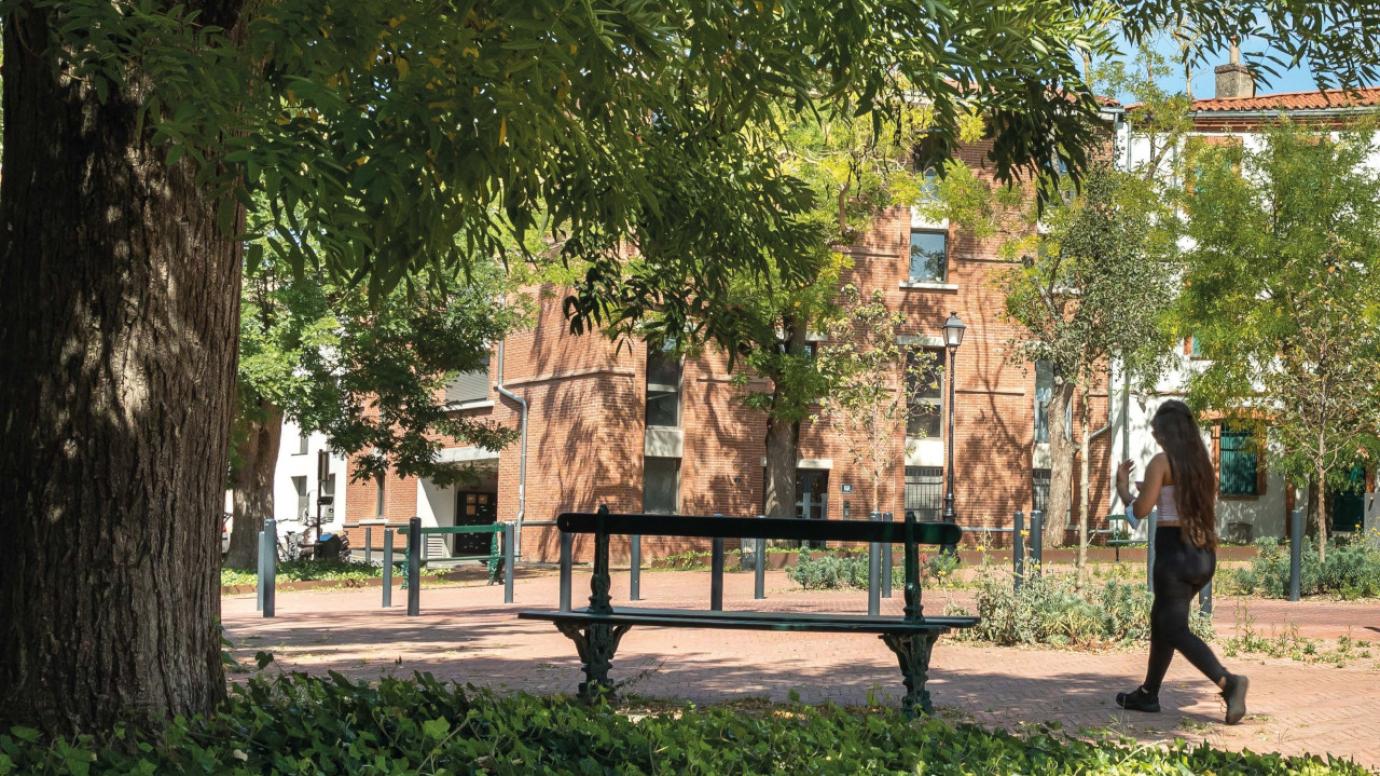Responsible urban development in Toulouse
Balancing urban growth with biodiversity, comfort, and climate resilience.
- Country:
-
 France
France
- Type of project :
- Governance
- Sustainability
- Size of city/region:
- 200 000 inhabitants to 1 million inhabitants

Key facts
Type of project: governance, sustainability
Main sponsor: City of Toulouse
Year completed: 2023
Total area: 118 km2 (city of Toulouse)
City / regional background
Toulouse, with its location in the Southwest of France, three UNESCO World Heritage Sites, and dynamic aeronautics and space industry, is a very attractive city. Over the past ten years, it has grown by an average of 5,000 inhabitants per year. Each year, around 3,500 new housing units need to be built, and business areas must be expanded. However, this expansion has so far come without an overall vision.
In a densely populated city like Toulouse, the challenge is to plan in a way that the city remains attractive and liveable despite its higher density. This means
-
Preserving green spaces
-
Promoting quality architecture that contributes to maintaining a strong identity through the built environment
-
Developing public transport, pedestrian, and cycling facilities
-
Ensuring that shops, services, and workplaces are within a 15-minute walking or cycling distance
Toulouse is also particularly exposed to high summer temperatures and urban overheating. These threaten not only the health of residents but also local biodiversity.
Solution
In 2016, Toulouse launched the Toulouse Urban Project to guide urban development amid rapid construction. This initiative shapes the city's territorial growth with a long-term perspective to 2040. It involves collaborative urban strategies and a shared vision among diverse stakeholders while offering practical solutions for new building projects. Following a 2018 Manifesto outlining Toulouse's urban vision, and a 2019 City Master Plan, district-specific masterplans (2023) detail how the master plan applies to sectors, districts, and streets.
The city developed tools for constructive dialogues with architects and property developers, establishing quality criteria and guidelines for each of the city's six main districts. After three years of technical work and extensive citizen participation, the result is a set of six booklets known as the "Cahiers Toulousains."
These booklets cover a range of policy areas including housing, nature, economy, facilities, and inclusion. They address vital issues such as preserving neighbourhood identity, enhancing green spaces, improving public areas, facilitating mobility, boosting the economy, and enriching the city's architectural and urban diversity. A central focus is finding climate solutions, with each booklet offering context-specific, holistic climate mitigation and adaptation measures for every neighbourhood.
Criteria for high-quality (context, sense of place, diversity, beauty)
-
The booklets define guidelines that are relevant to each neighbourhood’s natural and built context. They provide a thorough analysis of the identity and urban evolution of each district, offering a historical, sociological and architectural perspective on the area.
-
The booklets’ guidelines will be used in all projects related to the built environment. They help local managers to decide whether a construction project is relevant or not, and to see with the project leader (public or private) how to improve it according to the local context.
-
An innovative and ambitious participation process has been implemented gathering more than 2,000 contributions over one year. The project team met with residents, workers, and visitors from various neighbourhoods, ages, and social backgrounds around the city. The result? An identity card for each of the six districts, helping to maintain human attachment to the places undergoing urban transformation.
-
Although technical documents, the booklets are written so that everyone can read them to explore the neighbourhood's past, present, and future, and understand urban development in their street, district and city.
Planning and management
The project was managed by a Project Director and a Project Manager from the Urban Prospective and Strategy Department for three years. They were supported by the Toulouse urban planning agency (AUAT) with five architects, urban planners, and landscape architects for the technical part of the Booklets.
Overall, about 50 departments of the City and Metropolis collaborated on the project (transport, local democracy, environment, urban planning, economy, public spaces, public gardens, urban heritage, communication, etc.), taking part in some 50 technical workshops.
Architects and property companies as well as Toulouse residents were involved in consultations.
Budget and financing
Total budget: €1,200,000 funded by Toulouse City.
One million euros was spent on studies, €200,000 on the citizen consultation process, and a small budget was added for printing.
Transferable ideas
Tips from the city/region:
- Involve all municipal departments to build a shared vision from the beginning so that the city master plan is an opportunity to enhance existing good practices and inspire new projects.
- Gather strong political support for the project by involving all local elected officials in the process.
- Be innovative, ambitious, and open-minded when drawing up the urban master plan, so that the story of the city and the guidelines defined are truly local solutions.


